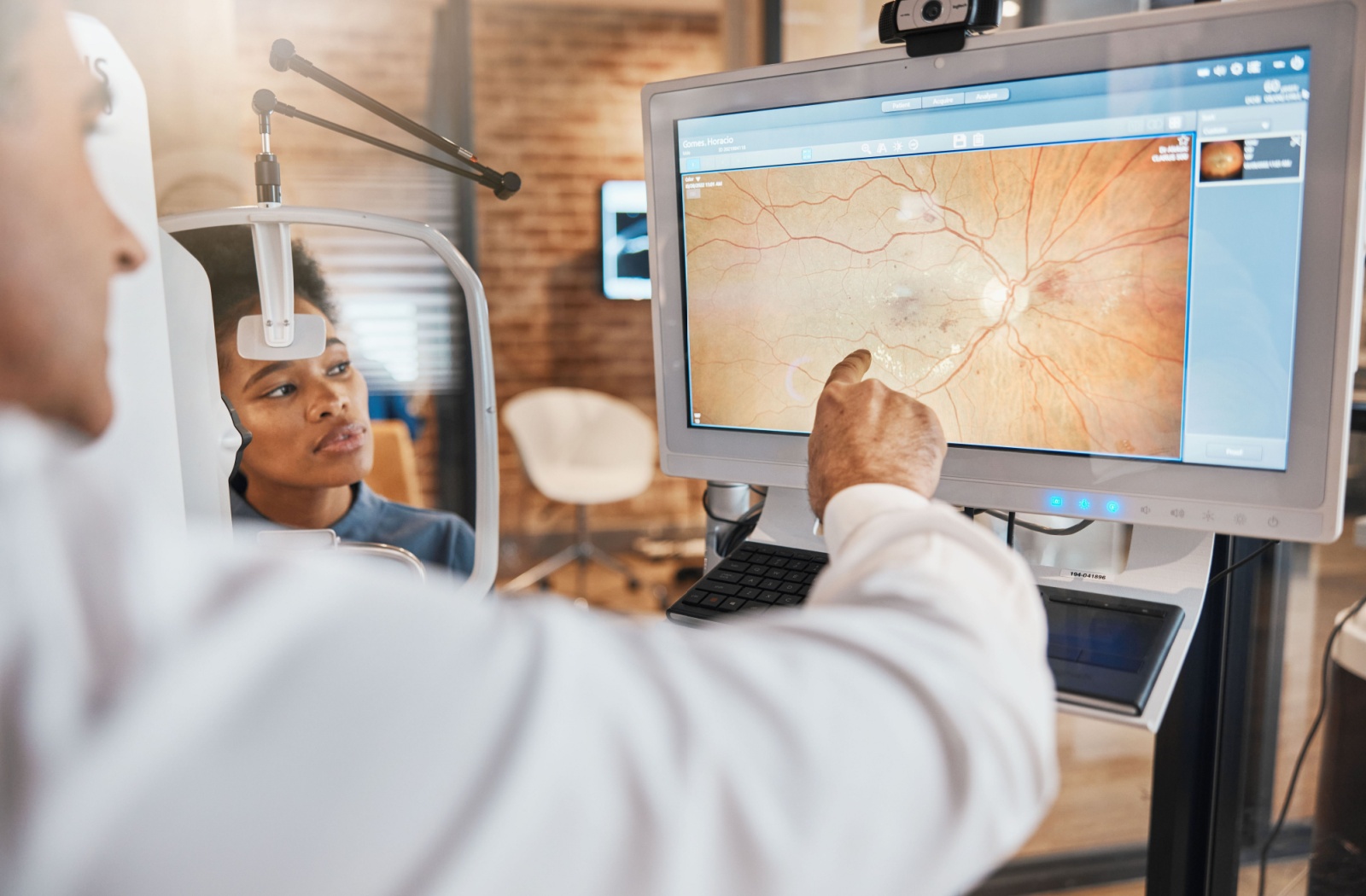
The body is 1 connected unit. Signs of certain health conditions can manifest in different areas of your health, including your eyes. The importance of routine eye exams extends beyond updating your vision prescription when your sight gets fuzzy.
With diagnostic tools and imaging techniques, your optometrist can identify and detect signs of eye diseases and general health conditions, such as diabetes, even before symptoms manifest.
If you have diabetes, your eye care should go beyond routine eye exams. An annual diabetic eye exam encompasses extensive testing and screening to monitor and detect signs of diabetes-related vision, helping to safeguard your overall health and vision.
Diabetes & Your Eye Health
Diabetes is a general health condition that affects more than just the body’s blood sugar levels. It can leave lasting effects on your eye health, leading to concerns that may threaten your vision.
The eye is a delicate and complex organ. When the body’s blood sugar levels are high, it can damage the blood vessels in your retina, the light-sensitive tissue at the back of your eye.
Elevated blood sugar levels, over time, can put you at risk for developing eye conditions such as:
Diabetic retinopathy: Where damaged blood vessels leak or cause abnormal blood vessel growth, potentially leading to vision loss.
Macular edema: Swelling in the central part of the retina (the macula), affecting visual sharpness.
Cataracts: Diabetes can accelerate the development of this age-related vision concern, which clouds the eye’s natural lens, leading to blurry or hazy vision.
Glaucoma: Elevated sugar levels can increase pressure in the eye, which can damage the optic nerve.
What makes diabetes-related vision complications so concerning is that these diseases can develop silently, often without noticeable symptoms in the early stages, until the condition progresses.
Routine Eye Exams & Diabetes Detection
Comprehensive eye exams provide a window into your overall health. Optometrists can detect early signs of diabetes (or other general health concerns) through changes in the blood vessels in your retina or other abnormalities in the eye.
During your routine eye exam, our team uses several diagnostic tools to monitor, assess, and identify any potential concerns, abnormalities, or changes in the eye for timely intervention. Early detection facilitates better management and visual health outcomes, helping you preserve vision before potential concerns worsen.
With the modern imaging tools we use during a routine eye exam, we can gain deeper insights into the eye’s internal structures, including the retina, the macula (within the retina), blood vessels, and the optic nerve.
Optomap Retinal Imaging
Fundus photography allows optometrists to capture detailed images of the eye’s internal structures.
Our ProVision team uses Optomap technology to take ultra-widefield retinal images, showing us up to 80% of the retina in 1 shot. This technology increases the likelihood of detecting even subtle retinal changes.
Simply rest your head against the machine and focus your vision on the target. Keep your eyes wide open and try not to blink as you notice the flash. In just a few short seconds, you can see exactly what the back of your eye looks like!

Optical Coherence Tomography (OCT)
OCT scans complement your retinal photos. This machine uses light waves to take cross-sectional scans of the retina, showing its distinct layers, allowing your optometrist to detect minute changes in your retinal health.
This technology enables early detection of fluid buildup, swelling, or abnormalities in the retinal layers, even before symptoms occur.
Rest your forehead against the bar and focus on the target. Open your eyes as wide as you can, and try not to blink (this can take slightly longer than a retinal photo), as the machine scans your retina.
Defining the Diabetic Eye Exam
A diabetic eye exam goes beyond a routine visit’s general eye health evaluation by screening specifically for diabetic changes within the eye.
We strongly encourage people with Type 1 or Type 2 diabetes to have an annual diabetic eye exam alongside their routine visit, regardless of whether they are experiencing any vision concerns, since many conditions develop silently.
Your Guide to Diabetic Eye Exams
1 of the defining aspects of this visit is eye dilation.
We use special eye drops to widen (dilate) the pupil. This allows more light to enter the eye, showing us a more extensive view of the retina. These drops can temporarily blur your vision and increase light sensitivity, but they’re a necessary step for a thorough health examination.
Once dilation takes effect, we capture detailed images (Optomap) and scans (OCT) of the back of your eye to detect abnormalities that might indicate the onset or progression of diabetic eye diseases.
These imaging techniques show us the current health of your eye. Here are some of the diabetes-related eye changes we’re looking for:
Unusual blood vessel formation
Microaneurysms or small bulges in retinal vessels
Bleeding or fluid leakage in retinal tissue
Swelling of the macula
Retinal detachment or tears
Elevated eye pressure
Proactively managing your diabetes has a positive impact on your overall health and well-being, and can lower the risk of developing diabetes-related vision concerns, but doesn’t eliminate them entirely.
Annual diabetic and routine eye exams serve as an effective preventive measure for monitoring your vision, eye health, and detecting concerns early before they progress and harm your sight.
Safeguard Your Sight with an Eye Exam
Routine eye exams are more than just a vision check. They provide your optometrist with a thorough insight into the health of your eyes, allowing us to detect eye conditions and systemic health issues early for timely management.
A diabetic eye exam complements the findings of your routine visit, acting as an extensive measure to help verify nothing is missed. These regular checks empower you to stay ahead of complications and keep your vision sharp and healthy. Connect with our ProVision team to schedule your routine eye exam today.










